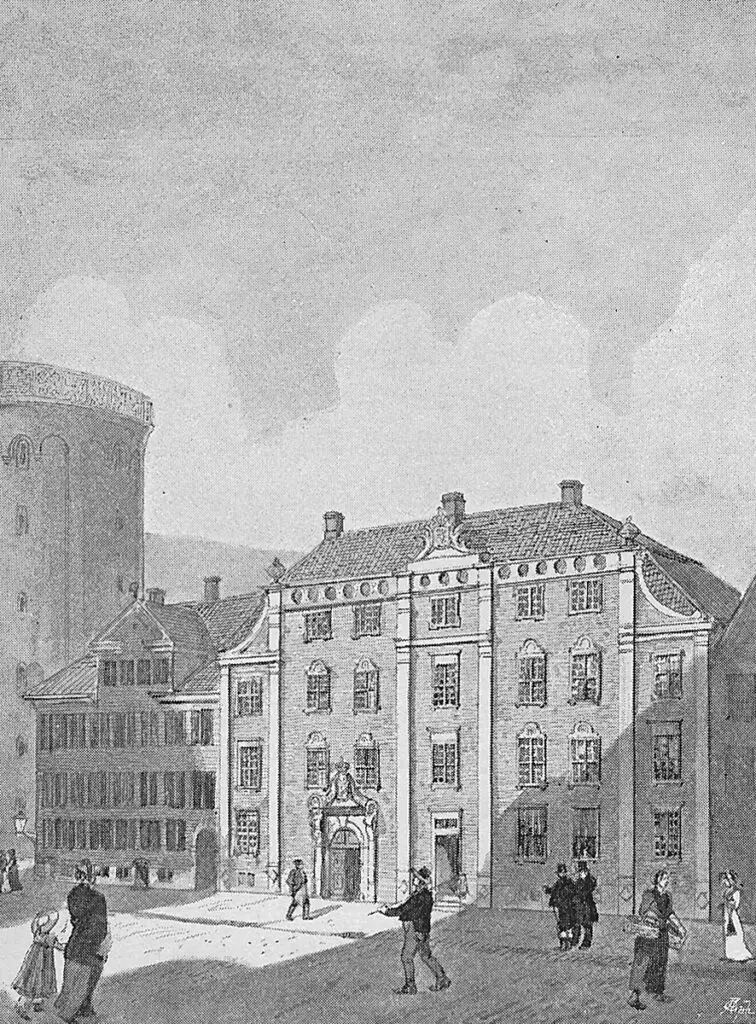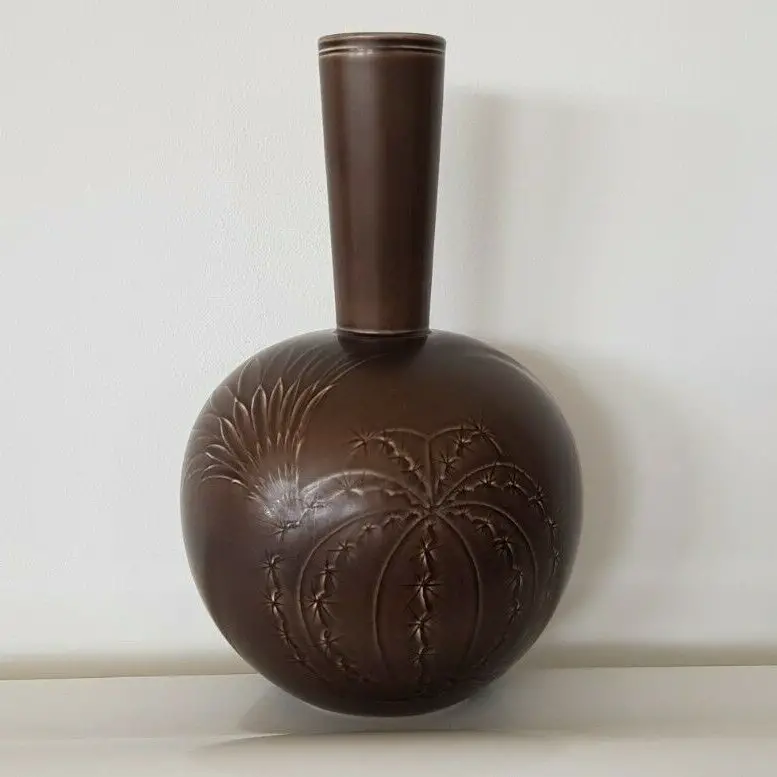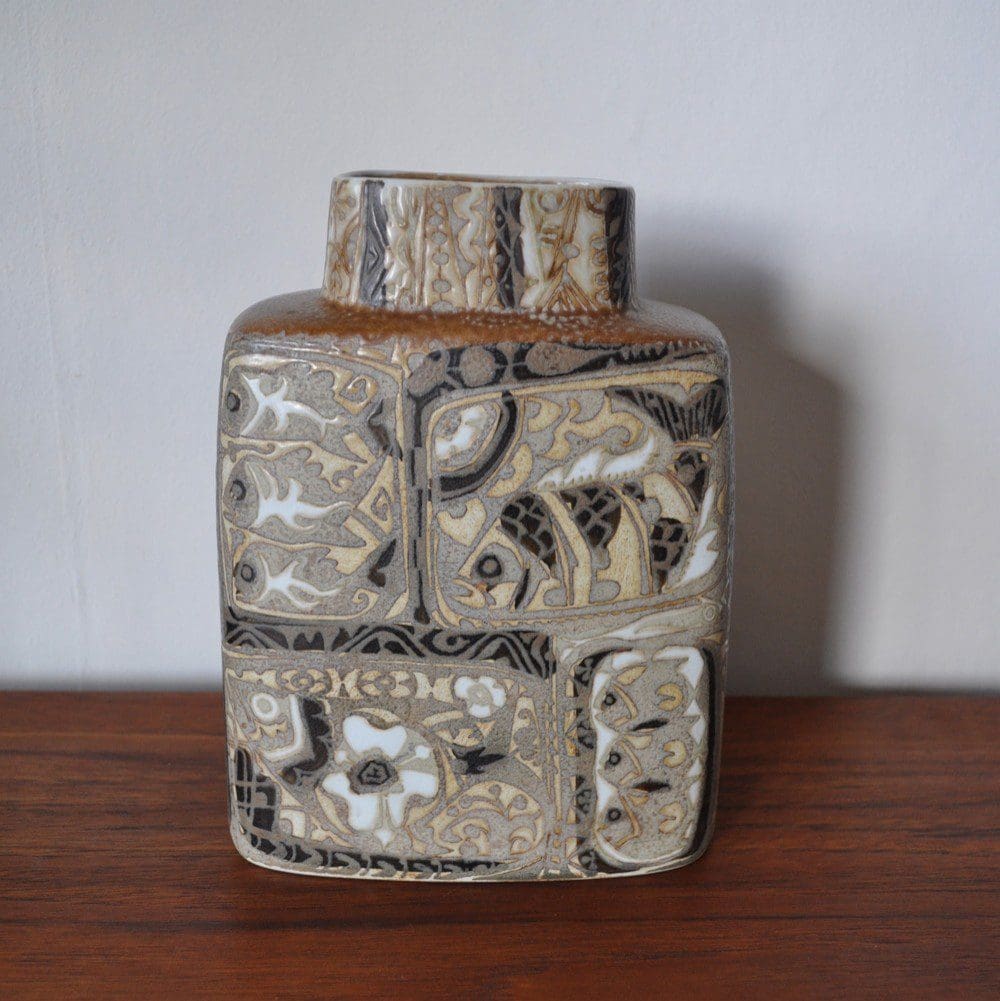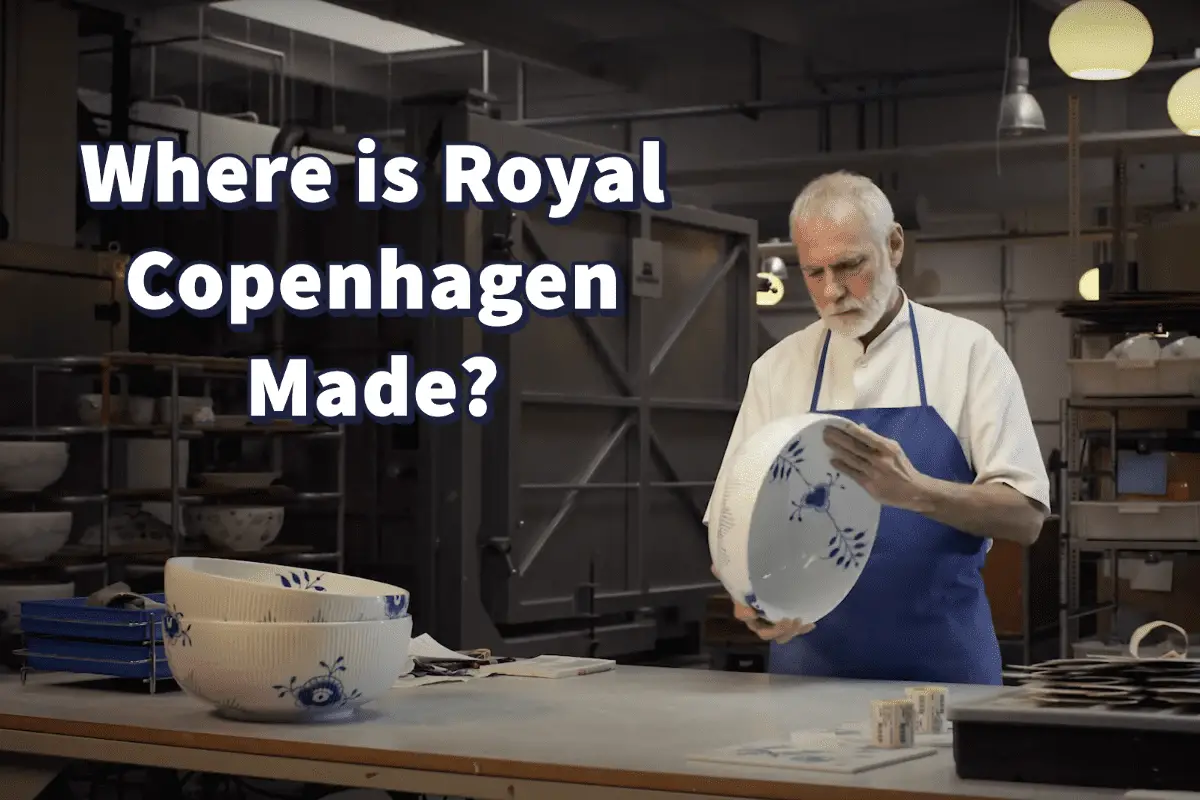When I was in Copenhagen many years ago, I picked up some Royal Copenhagen porcelain figurines for my mother. I visited some of the Royal Copenhagen shops in downtown Copenhagen. The shops that carry the Royal Copenhagen brand showed how important Royal Copenhagen is to Denmark’s identity.
Royal Copenhagen is now made in Thailand and Denmark. Skilled workers still paint the pieces of porcelain in both their Thailand and Denmark factories. One of Royal Copenhagen’s most essential designers was Nils Thorsson. Thorsson was an extremely prolific artist who created many timeless Royal Copenhagen pieces.
Table of Contents
- Where Royal Copenhagen Is Made And Why
- Nils Thorsson & The Royal Copenhagen Designers
- Frequently Asked Questions
- Related Questions
Where Royal Copenhagen Is Made And Why
Royal Copenhagen is a name that bears the name of Denmark’s largest city – Copenhagen. Today, Royal Copenhagen’s products are either produced in Thailand or Denmark.
Even though they are produced in Thailand, and not all products are made in Denmark, it can take several years for a very skilled Royal Copenhagen hand painter to be fully trained. Royal Copenhagen manufactures in Thailand because Thailand has the talent, artisans, and other skills to produce the required quality.
Royal Copenhagen Is Produced Outside Bangkok, Thailand.
The Royal Copenhagen factory is just outside Bangkok, Thailand. The only Royal Copenhagen still produced in Denmark is the Flora Danica Series – the other items are now created in Thailand.
Finding people who can paint high-quality porcelain is not easy, and I would assume that finding those hand painters in Denmark is now quite difficult.
From first-hand experience in dealing with many porcelain and ceramic hand painters for my work with Mondoro, I know it is not always easy to train qualified hand painters. Just because someone can paint does not mean they have the skills to paint porcelain figurines and other objects.
Royal Copenhagen uses excellent brushes made from the hair of the cows’ ears. Even today, some of the best-quality brushes use hair from oxen or cows. Training hand painters to paint using brushes and to paint fine hand painting without any errors is very difficult.
All the Techniques and Training Comes From Copenhagen
Even if the Royal Copenhagen is now produced in Thailand, the technique, skill, training, and quality have all been transferred from Denmark. The Thailand factory and products have the same standards as the Royal Copenhagen factory in Denmark.
Besides, finding and training skilled hand painters in Thailand would be much cheaper for Royal Copenhagen to produce their products in Thailand than in Denmark; the labor and other costs in Denmark would be extremely high, which would also mean they would have to sell their products at a very high rate.
Producing in Thailand Allows Them To Be More Competitive
Producing its products in Thailand also allows Royal Copenhagen to remain more competitive while building and selling high-quality products. Otherwise, the products would be so highly priced that most people could not afford them.
So even though Royal Copenhagen bears the name of Copenhagen, most of its figures and art are produced in Thailand. Their designs come from Denmark; one of their most essential designers was Nils Thorsson.
Nils Thorsson & The Royal Copenhagen Designers

One of Royal Copenhagen’s influential designers is Nils Johan Thorvald Thorsson. Thorsson was a ceramist, glasswork, potter, and designer who lived from 1898 to 1975.
Nils Thorsson was born in Eslov, Sweden, Skane county, in the southern part of Sweden. Even though he was born Swedish, he trained at the Technical High School in Copenhagen and later became an apprentice at the Royal Copenhagen in 1912.
Thorsson graduated as an apprentice from the Royal Copenhagen Academy in 1917. He went on to work his way up in Royal Copenhagen while becoming one of their most prolific and essential designers.
He became the artistic director of Royal Copenhagen in 1949 and was also the creative director of Alumina from 1928 to 1969.
About Aluminia Factory And Royal Copenhagen

Aluminia was a Danish factory for salience or earthenware. The factory was established in Copenhagen in 1863. In 1882, the owner of Aluminia purchased the Royal Copenhagen porcelain factory.
The same owners owned the Aluminia factory and the Royal Copenhagen factories for a long time. Still, each factory was independent and sold their products under their respective names, i.e., Aluminia and Royal Copenhagen.
In 1969, the name Aluminia was dropped, and the products are now sold under the mark “Royal Copenhagen Denmark Fajence.”
Nils Thorsson was an essential designer for Aluminia and Royal Copenhagen brand names.
Nils Thorsson’s Important Collections And Artwork
Nils Thorsson believed in the Danish style of simplicity and functionality. His belief in this kind of work can be seen throughout this artwork.
Some of Nils Thorsson’s most important works of art include:

Solberg Designed By Nils Thorsson, (Royal Copenhage- 1930s)

Marselis – Created by Nils Thorsson and has the Aluminia name (1950’s)

Tenera Collection, created by Nils Thorsson (Royal Copenhagen, the 1960s)

Baca Designed by Nils Thorsson, (Royal Copenhagen, 1960s and 1970s)
The truth is that Nils produced so many great works of art while at the Royal Copenhagen and Aluminia, it is hard to highlight them all. He understood the trends and fashion of the times and made works of art considered masterpieces.
Many of the pieces he created are also considered to be timeless. For example, the Baca and Tenera collections remain some of Royal Copenhagen’s most famous works as they are prime examples of mid-century modernism.
Thorsson was an extremely prolific designer and artist. His motifs in designs went from naturalistic to abstract geometric designs. He embraced all kinds of motifs such as birds, fish, and butterflies.
Thorsson is an artist who should be celebrated not only for his unique works of art but also his ability to create so many timeless and essential works of art that continue to inspire artists today.
Anita Louise Art is dedicated to art education, great artists, and inspiring others to find and create their art. We love art that uplifts and inspires. #ArtToMakeYouSmile! #ArtToMakeYouHappy!
If you are interested to see any of my art, you can find out more by clicking here. If you are interested in what inspires me and my paintings, you can discover more by clicking here.
We have a free newsletter and would love you to be part of our community; you can subscribe to the newsletter by clicking here. If you have any questions, I would be happy to talk to you at any time. You can reach me, Anita, by clicking here.
Subscribe to our Anita Louise Art YouTube Channel filled with great videos and information by clicking here.
Join us for our podcast “5 Minutes With Art.” Spend 5 minutes a week with us to discover and learn about great art and artists. You can find out more about our podcast by clicking here.
Frequently Asked Questions
Where is Royal Copenhagen porcelain currently manufactured?
Royal Copenhagen porcelain is currently produced in both Thailand and Denmark.
Why is Royal Copenhagen made in two different countries?
The production is split between Thailand and Denmark to combine skilled craftsmanship with cost-effective manufacturing processes.
Is the quality of Royal Copenhagen porcelain the same in both Thailand and Denmark?
Yes, the quality remains consistent, as skilled artisans hand-paint the porcelain pieces in both the Thailand and Denmark factories.
Are all Royal Copenhagen products painted by hand?
Yes, the intricate designs on Royal Copenhagen porcelain are meticulously hand-painted by skilled craftsmen.
Who was Nils Thorsson, and what was his contribution to Royal Copenhagen?
Nils Thorsson was a highly prolific artist and one of Royal Copenhagen’s most essential designers. His timeless creations have left a lasting impact on the brand.
What are some popular Royal Copenhagen pieces designed by Nils Thorsson?
Nils Thorsson created numerous iconic pieces, and some of his notable designs include various porcelain figurines and decorative items.
Is Royal Copenhagen still an important part of Denmark’s identity today?
Yes, Royal Copenhagen continues to hold significance in Denmark’s identity, and the brand is recognized for its rich heritage and craftsmanship.
Can you visit Royal Copenhagen shops in Copenhagen to purchase their products?
Yes, Royal Copenhagen has shops in downtown Copenhagen where you can find and purchase their porcelain products.
Are there specific collections or series that are exclusive to either the Thailand or Denmark factories?
While production is divided, many collections are available in both locations, maintaining the brand’s overall design integrity.
What factors led to Royal Copenhagen expanding its production to Thailand?
The decision to manufacture in Thailand likely involved a combination of factors, including cost efficiency and the ability to maintain the high-quality craftsmanship for which Royal Copenhagen is known.
Related Questions
Fine Arts Vs. Craft, Is There A Difference?
Fine art is a broad term that encompasses many art forms, from the visual to the written word. Dance, music, theatre, painting, writing, poetry, and sculpture are all under the fine art umbrella. Craft is about handmade objects and usually refers to quilting, knitting, pottery, sewing, and woodworking.
By clicking here, you can learn more by reading Fine Arts Vs. Craft, Is There A Difference?.
Where Did Art Come From?
The more you study art, the more you learn about yourself, cultures, and people who have gone before you. Art has been around for thousands of years.
Many historians believe art started first in Africa; many ancient art forms have been found worldwide. Cave dweller’s art is one of the earliest forms of art. Many cultures put art on their bodies through tattooing and other art forms.
By clicking this link, you can discover more by reading Where Did Art Come From?.

